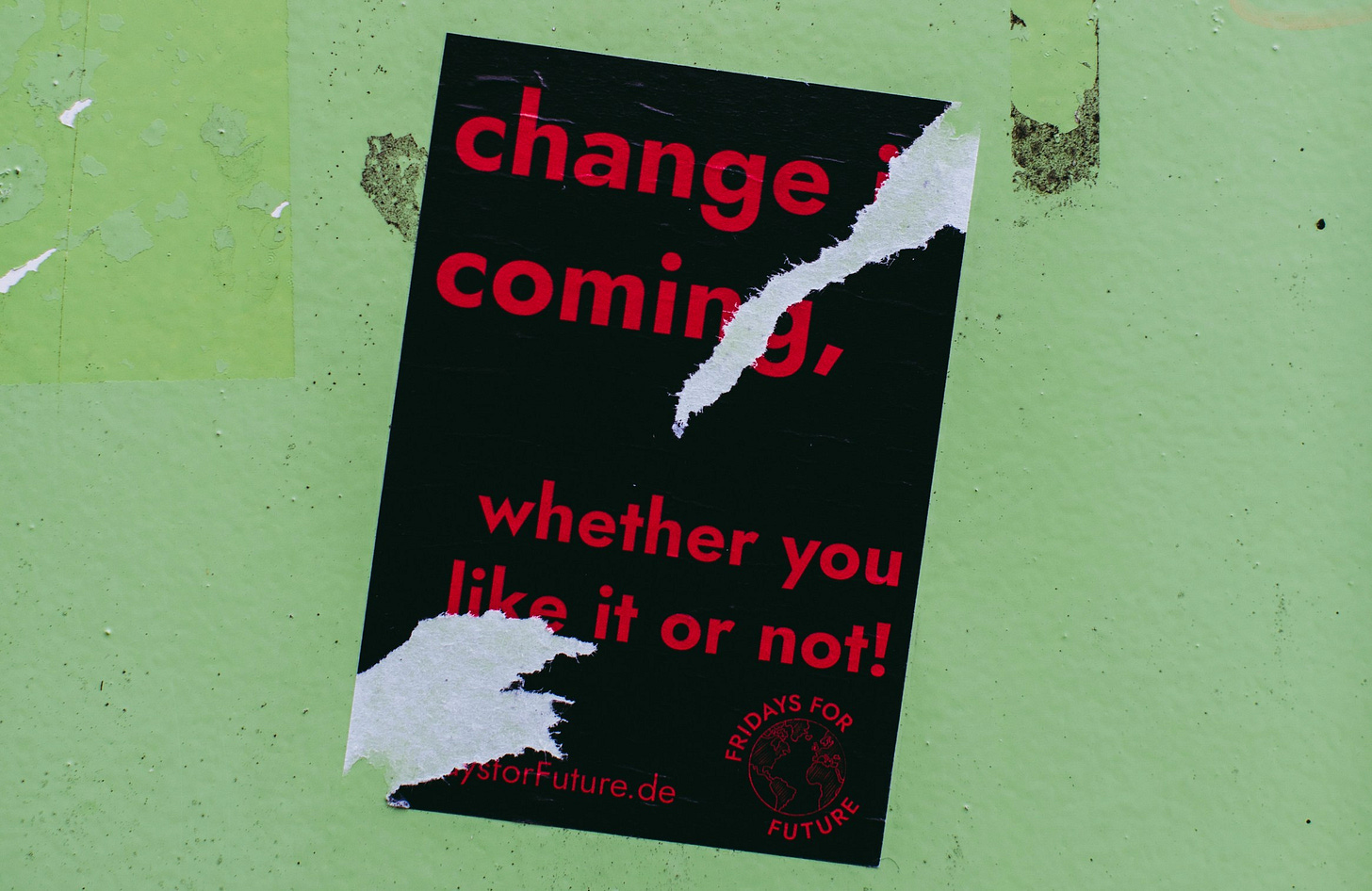I am not known for my longevity in jobs.
My ability and desire to move roles regularly has been characterized both positively and negatively over the course of my career. Some universities viewed me as a “non-traditional candidate” and “flight risk” because of my eclectic resume and shortish (particularly by university standards) tenure in roles, while my Amazon recruiter said these same characteristics showed I am “agile and adaptable.” As with many things in life, the reality is probably somewhere in the middle.
People and organizations need change.

For organizations, change brings fresh perspectives and new ideas. When someone is new in role, there’s this wonderful but short window of opportunity to see the potential in an organization that other, more tenured team members are no longer able to see (or they can see, but dismiss as “the way things are”). For people, change pushes us outside of our comfort zone and provides new opportunities to learn and grow.
Organizations atrophy when people stay too long—and people do, too.
I once had a colleague say “both organizations are getting an upgrade” anytime someone announced they were leaving. I always loved that. Every one of us can only take an organization so far, and then both we and our companies need a change.
On the other hand, change that occurs too frequently can be disruptive for teams and organizations. New leaders often want to make their mark with a new vision and strategy, and these take time to take hold. Teams with a steady rotation of leaders every year or two can feel whiplash, never quite settling into one change before a new one is hoisted upon them. And for those leaders who leave too quickly (I may have been guilty of this once or twice) … we often don’t get to see the fruits of our labor.
So when should you stay in a role, and when is it time to go?
The short answer is, “it depends.” Everyone’s situation is different. But, there are a few questions you can ask yourself to help guide your decision:
What did I set out to accomplish in this role, and have I done that?
Pro tip: when you first take a new role, decide what you want to accomplish in it—based on both your growth trajectory and the needs of the organization/team at that time—and how long that should take (e.g., I want to develop and execute a 3-year strategy, therefore, I see myself being in this role ~4 years). Then, periodically assess yourself against that goal to keep yourself on track.Do I still have opportunities to learn and grow in this role, and take on new challenges that will help position me for the next role?
This applies to professions, companies, and industries, too. There may come a time when you find you are no longer learning and growing at the pace you want within your profession or industry and decide you want to try something new. (Or maybe that’s just me? More on this in a future post.) Bottom line is this: when your pace of learning starts to decelerate, it may be time to move on.Am I running to something, or away from something?
Even if you don’t love your job, be selective in choosing your next one. Make sure it’s what you really want to do next—and that it will position you for whatever you want to do after that—rather than just being a way to escape the role you’re in. You may run away from a bad job only to find yourself stuck in an even worse one, with less ability to move again.
Your mileage will vary, of course.
Not everyone can—or wants to—leave their job. There are a myriad factors that may influence your desire, and ability, to change roles.
You might have kids in college, paid for by the university’s tuition benefit.
You may be geographically constrained.
You might be nearing retirement age, and staying put for a few more years will set you up for an easier retirement.
You may really like the people you work with and prioritize a stress-free work environment over climbing the corporate ladder.
Or maybe you don’t have a reason other than … you just don’t want to go right now. It’s all good.
Whether you choose to stay or go, the decision is yours to make—just make it with intention. Don’t change for change’s sake or stay where you’re at simply because it’s easier than doing nothing.
Reflect on your motivations and constraints—get clear on your ‘why’—to decide when it is exactly the right time … for you.





Point three is so important! Every time I’ve made a switch, I’ve always waited for the clarity that can only come from intentionally running towards something.